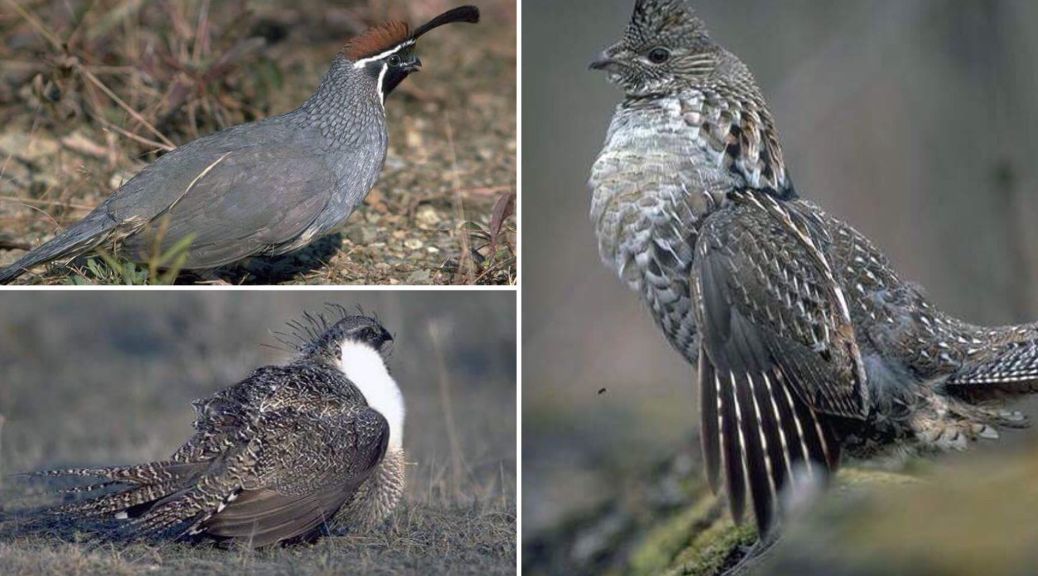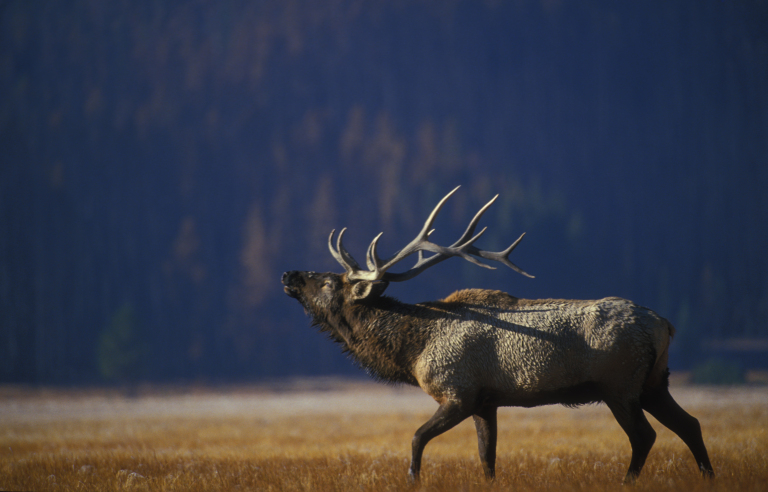Quail, Forest Grouse, Ptarmigan and Band-tailed Pigeon General Seasons to Open Soon

by CDFW
9-2-2018
Website
The 2018-19 general upland game bird hunting season will open in mid-September for several species in specific zones around the state, providing hunters with many opportunities to bring home some delicious table fare for the upcoming holiday season.
September openers include quail Zone Q1 opens for mountain quail on Sept. 8, and Zone Q2 will be open for all quail on Sept. 29, sooty and ruffed grouse (general season will open in various northern and eastern counties on Sept. 8); white-tailed ptarmigan (which will open Sept. 8); and band-tailed pigeon (the northern hunt zone will open Sept. 15).
Please note that nonlead ammunition is now required when hunting on California Department of Fish and Wildlife (CDFW) Wildlife Areas and Ecological Reserves. As of July 1, 2016, the nonlead shot requirement is extended to include the take of upland game birds with a shotgun statewide, with the exceptions of dove, quail and snipe, or any upland game bird taken on a licensed game bird club. Please plan accordingly. For more information, please see the CDFW nonlead ammunition page.
Zone maps and information about daily bag limits and possession limits for each game bird species can be found on the CDFW Upland Game Bird Hunting webpage. Additional information about each species can be found below.
Quail
Quail are some of the state’s most popular native game birds. There are three species of quail found in California: California quail, mountain quail and Gambel’s quail. California quail (the state bird) are common and widespread throughout the state in low to mid-elevation brushy habitats with good cover and abundant food. Mountain quail are found in higher elevation habitats. Gambel’s quail are California’s most desert-adapted species and are found in the very arid lands of southeastern California.
The early mountain quail-only season starts on Sept. 8 in Zone Q1 ( https://nrm.dfg.ca.gov/FileHandler.ashx?DocumentID=110413&inline ) and continues through Oct. 19, covering much of the mountainous region of northern and eastern California. On Sept. 29, the early general quail season opens in Zone Q2 for all quail species in several north coast counties. The remainder of the state will open to quail hunting on Oct. 20 and extend through Jan. 27, 2019. Finally, an additional two-day early hunt season will be open on Oct. 6-7 in Mojave National Preserve for hunters with junior hunting licenses.
For all quail species, the daily bag limit is 10 and the possession limit is triple the daily bag. Hunters can still use lead shot for quail until July 1, 2019 unless hunting on CDFW Wildlife Areas or Ecological Reserves.
All three native species of quail are characterized by high reproductive potential associated with adequate and well-timed winter and early spring precipitation. Northern California experienced increased precipitation this spring, benefitting quail habitat and productivity. Hunters should experience good populations of quail this fall.
All three species of quail are most active in the early morning and later afternoon and move in large coveys throughout the day. Quail have distinctive calls that can provide clues to the birds’ location. Quail are more apt to run than flush, making them a more challenging game bird to hunt. Hunting dogs can be useful for locating, flushing and retrieving birds in the field.
Quail can be successfully hunted with legal gauge shotguns. A modified or improved cylinder choke is recommended to avoid damage to the bird. Because of the dense brush habitats where they are usually hunted, downed quail can be hard to find. Despite this challenge, CDFW reminds hunters that wasting game is both unethical and illegal.
CDFW estimates that in the 2016-2017 season, 51,281 hunters bagged 320,913 quail over the course of 184,541 hunter-days. Not surprisingly, California quail is the most frequently bagged of the three species.
Forest Grouse
California has two species of native forest-dwelling grouse: the sooty grouse and the ruffed grouse. Sooty grouse occur in the Sierra Nevada, Cascade and northern coast ranges while the ruffed grouse is restricted to the northwestern part of the state. The general hunting season for both species extends from Sept. 8 to Oct. 8 this year. For sooty and ruffed grouse, the daily bag limit is two (both of one species or mixed species) and possession limit is triple the daily bag.
Although they are fairly large birds, grouse camouflage themselves well and generally hold tight to their location even when hunters are nearby. They flush quickly and fly off in a zigzag pattern, requiring a quick and accurate response from a hunter. Dogs are useful companions to help hunters find, flush and retrieve bagged grouse. Nonlead shot is required for all grouse statewide.
Ptarmigan
The white-tailed ptarmigan is a non-native grouse that was introduced by CDFW to the Sierra Nevada in the early 1970s. This is the smallest species of ptarmigan and the only one found in California. They inhabit the high elevation alpine habitats at low densities from Sonora Pass in Tuolumne County to Kings Canyon National Park.
Hunting these birds can be challenging because of the high elevation and steep terrain. Hunting is permitted from Sept. 8-16. The daily bag limit is two per day and the possession limit is two per season. Hunters should prepare for difficult hiking conditions and be familiar with the area before heading out after this game bird. Nonlead shot is required for hunting ptarmigan.
Band-tailed Pigeon
The band-tailed pigeon is California’s only native pigeon and is a close relative of the extinct passenger pigeon. They look similar to the introduced domestic or rock pigeons that frequent urban areas. Band-tailed pigeons are often found in mountainous terrain throughout the state, using coniferous forests as well as oak woodlands, but populations are migratory and movements can be unpredictable. The federal Harvest Information Program (HIP) estimates that in 2017, 2,500 hunters spent 5,600 days afield in California and harvested 5,600 band-tailed pigeons.
The northern California hunt zone season runs from Sept 15-23. The daily bag limit is two and the possession limit is triple the daily bag. The southern hunt zone does not open until December. Nonlead shot is required for band-tailed pigeons statewide.
CDFW reminds hunters that an upland game bird stamp is required for licensed adult hunters (18 years and older) but not for hunters with a valid junior hunting license. A HIP validation is also required to hunt band-tailed pigeons.
More Reports
CDFW Announces Angling Closure at the Mouth of the Klamath River
Klamath River - Upper - OR
9-1-2018
The spit fishery at the mouth of the Klamath River will be closed to angling at 11:59 p.m. on Monday, Sept. 3. Based...... Read More
California Department of Fish & Wildlife Reports
for Friday, August 31st, 2018
• Boaters Can Help Fight Spread of Invasive Mussels Over Labor Day Weekend
• Hunting Deer and Elk Out of State
